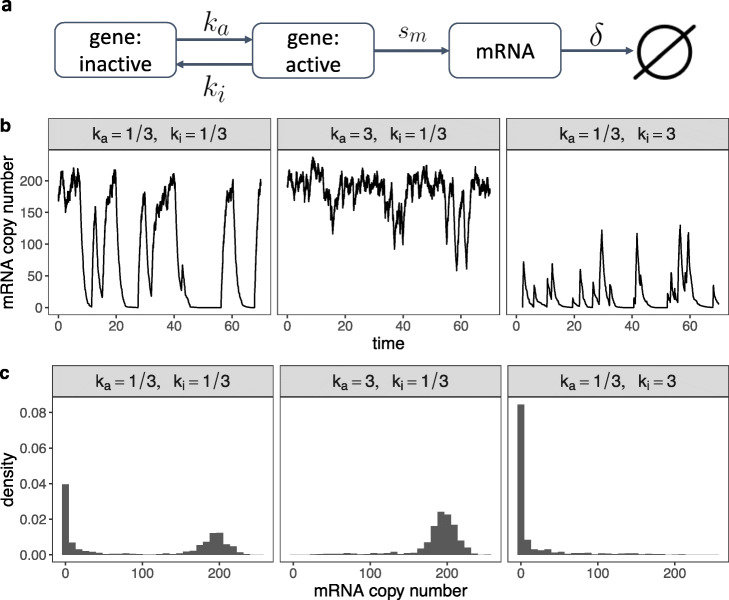Fig. 2.
A two-state stochastic model of the expression levels of one gene. a A diagram of the two-state gene expression model [76–78], where a gene stochastically switches from an inactive state to an active state at rate ka and from an active state to an inactive state at rate ki. The gene transcribes mRNA at rate sm only when it is in the active state. The transcribed mRNA then degrades at rate δ. b Given sm=200 and δ=1, the effects of ka and ki on the temporal dynamics of the gene’s mRNA copy number. Three example values of ka and ki are provided. Left: when both ka and ki are small, the mRNA copy number switches between small and large values. Middle: when ka is much larger than ki, the mRNA copy number remains large most of the time. Right: when ka is much smaller than ki, the mRNA copy number remains small most of the time. c Distributions of the gene’s mRNA copy number (across cells) corresponding to the three example settings in (b). Left: when the gene’s mRNA copy number switches between small and large values, the resulting distribution is bimodal with two modes at zero and around sm/δ. Middle: when the gene’s mRNA copy number is large most of the time, the resulting distribution has a single mode around sm/δ. Right: when the gene’s mRNA copy number is small most of the time, the resulting distribution has a single mode at zero. In summary, when ka is small, the gene is expected to have biological zeros in cells with non-negligible probability

